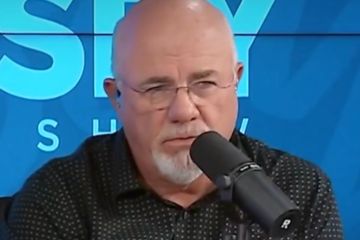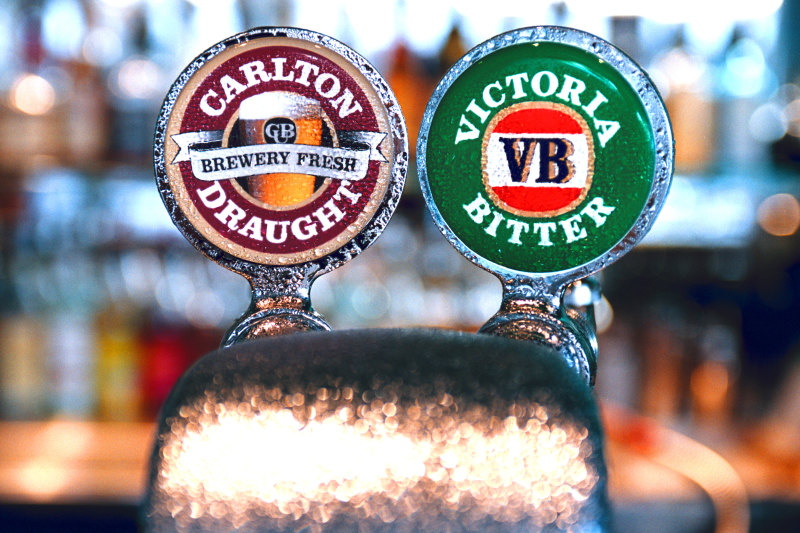House prices across Australia show signs of recovery, rise in three cities: new report
Australia’s property landscape is brightening, with new data confirming the fall in national prices is easing.
House prices slipped just 0.4 per cent overall during the June quarter, after a drop of 2.2 per cent in the three months to June, while prices rose in three major cities.
Domain’s quarterly House Price Report, released on Thursday, reveals prices have experienced modest growth in Melbourne, Hobart and Canberra in recent months, and fell less sharply in almost every other capital.
While the fall in the national median unit price also slowed quarter-on-quarter – down 0.2 per cent compared to -2.3 per cent – Melbourne was the only capital to record a price rise.
Capital city median house prices
| Median house price | QoQ | YoY | |
| Sydney | $1,032,338 | -0.4% | -9.1% |
| Melbourne | $818,237 | 0.3% | -7.7% |
| Brisbane | $559,167 | -1.4% | -1.8% |
| Adelaide | $540,473 | -0.1% | 1.4% |
| Perth | $528,186 | -2.0% | -5.4% |
| Hobart | $474,423 | 0.7% | 3.9% |
| Canberra | $741,947 | 1.5% | -0.1% |
| Darwin | $502,521 | -2.3% | -2.9% |
| Source: Domain House Price Report, June Quarter 2019 | |||
Economist Trent Wiltshire said the report reflected his earlier predictions of a market turnaround, with national prices expected to stabilise by year’s end and to grow slightly in 2020.
But Mr Wiltshire added that the eight weeks since the election were significant in further bolstering the recovering housing market, and were not included in their entirety in the June figures.
“Current data and observations affirm the trends reflected in the quarterly report, and consumer surveys indicate confidence is building,” he said. “Things are turning around.”
Capital city median unit prices
| City | Median unit price | QoQ | YoY |
| Sydney | $688,652 | -0.40% | -7.20% |
| Melbourne | $501,009 | 2.00% | -0.70% |
| Brisbane | $368,382 | -3.10% | -8.90% |
| Adelaide | $310,642 | -0.20% | 0.60% |
| Perth | $342,930 | -1.60% | -7.70% |
| Hobart | $356,751 | -6.40% | -1.50% |
| Canberra | $448,737 | -1.40% | 1.90% |
| Darwin | $298,438 | -4.80% | -10.40% |
| Source: Domain House Price Report, June Quarter 2019 | |||
Melbourne
Melbourne’s property price growth, although modest, came as a surprise and slightly ahead of predictions, Mr Wiltshire said, likely signalling that the city’s biggest downturn since the 1980s was drawing to a close.
In its first jump since December 2017, Melbourne’s median house price rose by 0.3 per cent in the June quarter, to $818,200, but remained 10 per cent below its 2017 peak.
Unit prices were also strengthened, with Melbourne the only capital city to record a rise, up 2 per cent, to $501,000, in the latest report.
Mr Wiltshire said there were further positive signs, with more buyers attending open-for-inspections across the city, and auction clearance rates reaching highs not seen since November 2017.
Sydney
Property prices in the harbour city fell further over the June quarter, but with a drop of 0.4 per cent the pace had slowed, Mr Wiltshire said.
The city’s house median sits at $1,032,338, while unit prices had also fallen 0.4 per cent to $688,652.
“Sydney house prices are now back to early 2016 levels, and units are back to mid-2015 levels,” Mr Wiltshire said. “[However,] property prices are still substantially higher than before the boom, and Sydney remains the most expensive capital in which to buy a house or unit.”
Mr Wiltshire said the forecast for a market turnaround by the end of the year remained.
Hobart
“While most capitals have been falling since 2017, Hobart has been booming,” Mr Wiltshire said, “but it does look as though that’s coming to an end, with growth slowing as buyer interest has waned.”
The island capital’s median house price rose 0.7 per cent in the quarter to $474,423, a rise of 3.9 per cent over the 12 months to June, the smallest annual increase since 2016. In three years, the city’s median has jumped 35 per cent.
“Even with the big run-up, Hobart remains the most affordable capital in which to buy a house,” Mr Wiltshire said, “although it is gaining on Darwin and Perth.”
Brisbane
Stricter lending conditions and the apartment construction boom have weighed on Brisbane property prices, Mr Wiltshire said, reflected in a quarterly house price fall of 1.4 per cent to $559,167, and unit price drop of 3.1 per cent to $368,382.
But with fewer apartments hitting the market in late 2019 and 2020, he said there will be less downward pressure on prices.
“Strong population growth has meant the correction in unit prices was not as severe as some had predicted,” he said.
Adelaide
Adelaide’s house price median may have dropped a mere 0.1 per cent to $540,473 in the June quarter, but it was a drop nonetheless, just the second time it has done so since 2014.
Annual house price growth for the South Australian capital averaged 4 per cent between 2013 and 2018 but had slowed to 1.4 per cent over the year to June. Unit prices also fell in the June quarter but grew by a slight 0.6 per cent over the year, to $310,642.
“Adelaide is still the third most affordable city in which to purchase a house and the second cheapest to buy a unit in,” Mr Wiltshire said, predicting modest price growth for the year ahead.
Perth
Perth property prices have continued their downward slide, Mr Wiltshire said.
House prices fell 2 per cent to $528,200 in the June quarter and are now 14 per cent below the city’s 2014 peak.
Mr Wiltshire said Perth was the third-cheapest place in which to buy a standard house.
Perth’s unit prices have also continued to tumble, falling by 1.6 per cent to $342,900 in the June quarter, now cheapest behind Darwin and Adelaide.
Canberra
In the nation’s capital, house prices jumped 1.5 per cent in the June quarter, but at $742,000 remained relatively unchanged over the year.
In contrast, unit prices fell in the June quarter but rose 1.9 per cent over the year to sit at $448,700.
“Canberra’s median unit price has fluctuated between $400,000 and $460,000 since 2010, Mr Wiltshire said, “with prices held down by record rates of new construction.”
Darwin
In 2013, when house prices peaked, Darwin was the second most expensive capital in which to buy a house. Now sitting 26 per cent below that high, and following a 2.3 per cent fall in the June quarter, Darwin’s median house price of $502,500 makes it the second cheapest of all the capitals.
In the June quarter, Darwin took out the gong for the most affordable unit median, with a drop of 4.8 per cent lowering it to $298,438.
We recommend
We thought you might like
States
Capital Cities
Capital Cities - Rentals
Popular Areas
Allhomes
More







